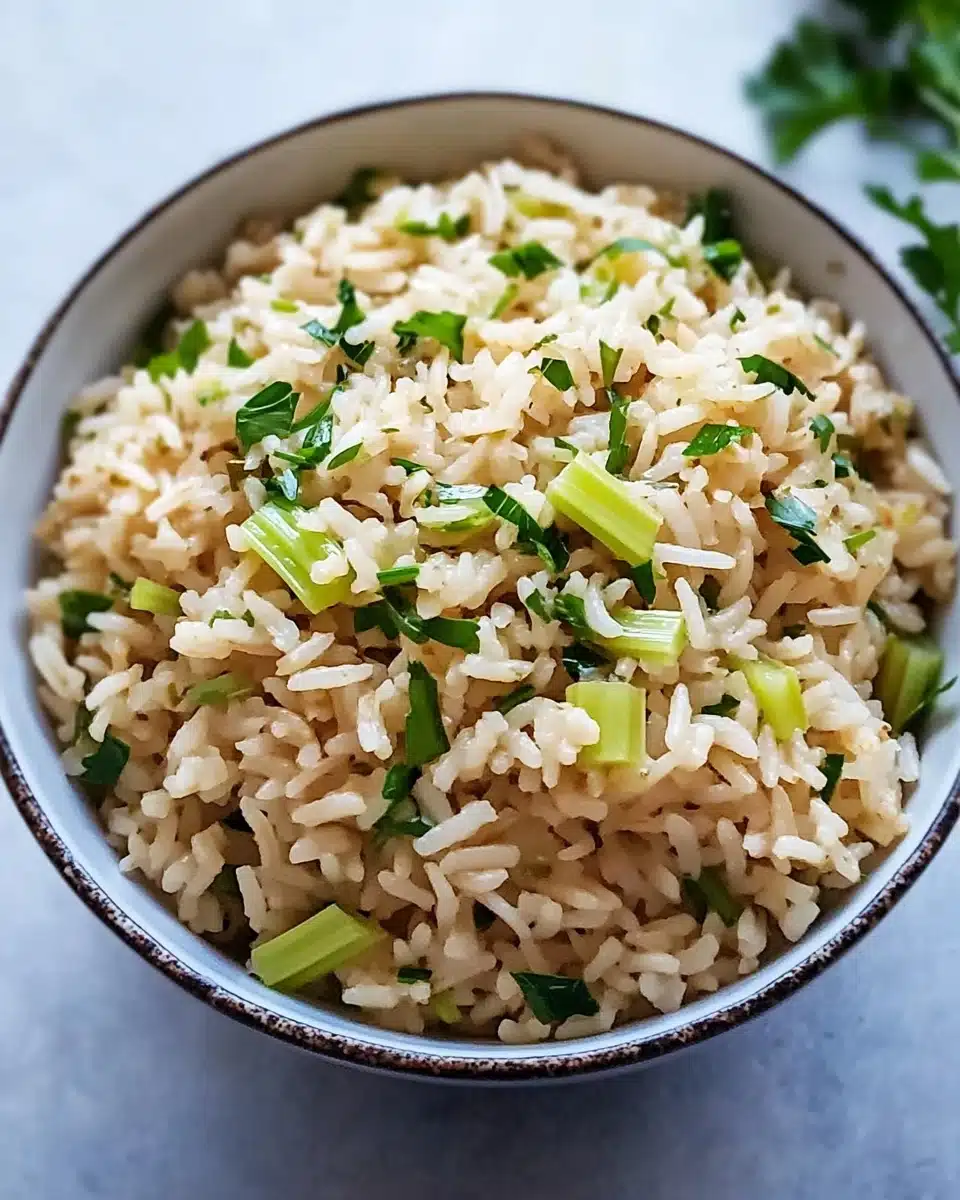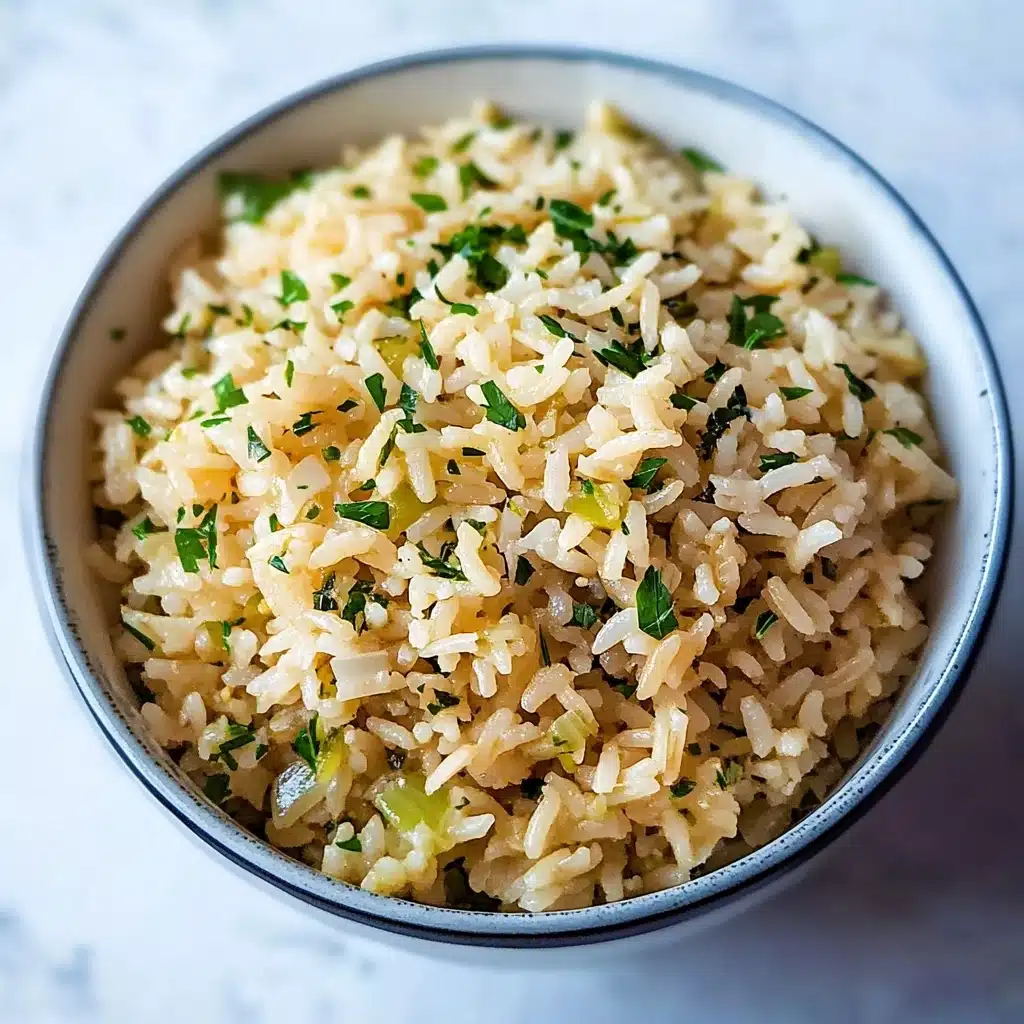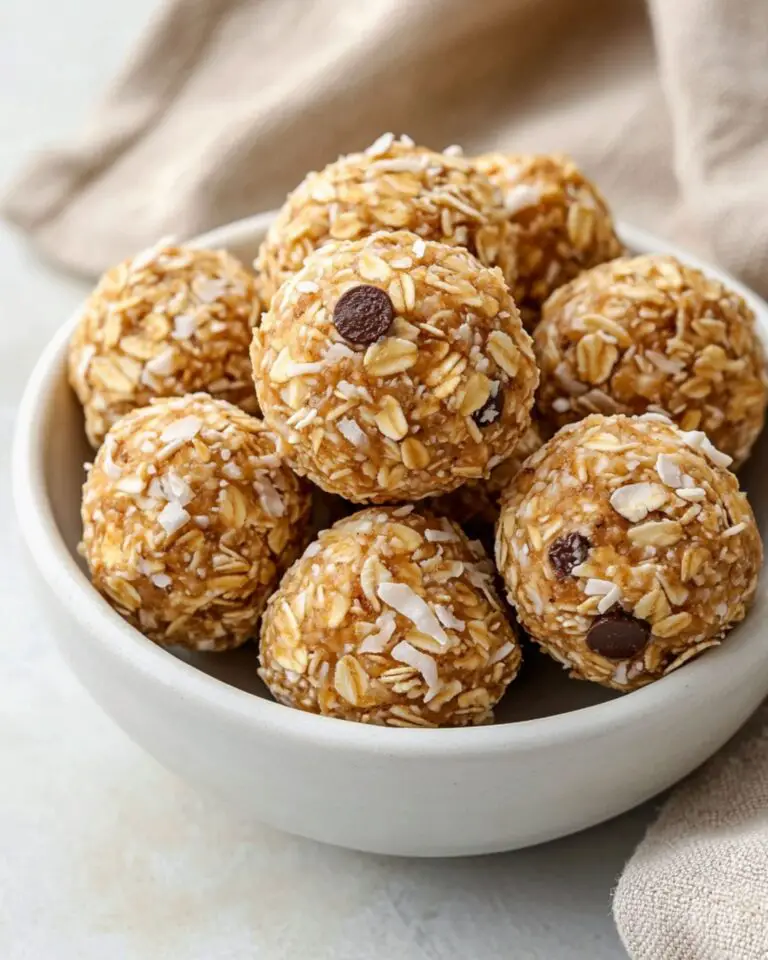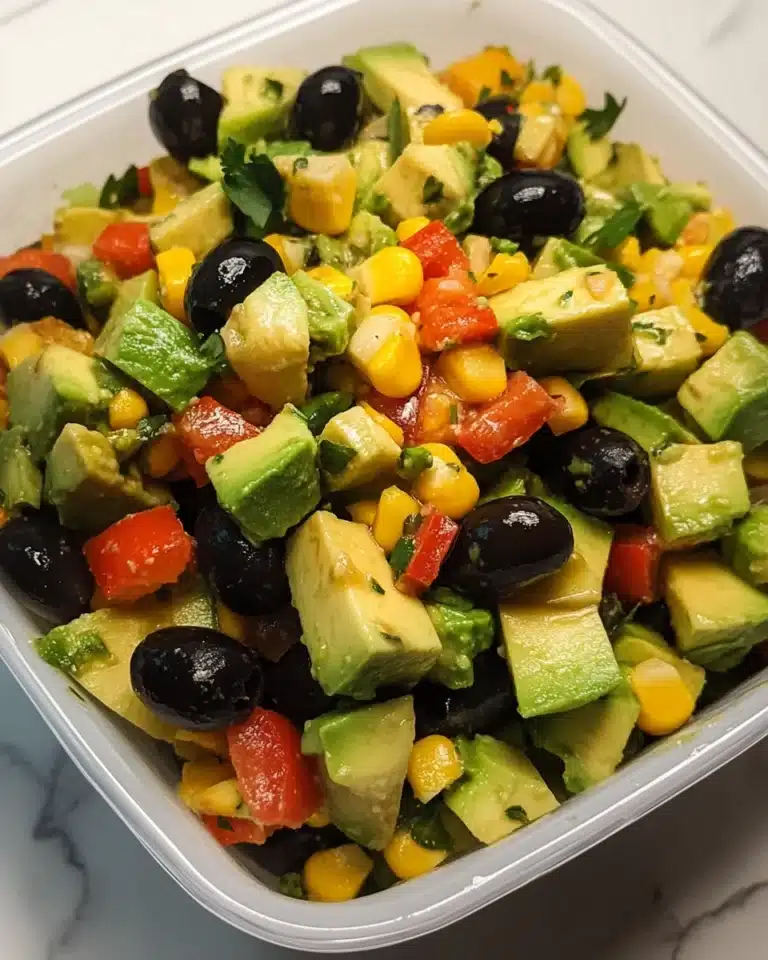If you’re on the hunt for a dish that is both comforting and flavorful, Rice Pilaf is your perfect match. This dish takes the humble grain to new heights with its aromatic flavors and satisfying texture, making it a true dinnertime favorite.
Why You’ll Love This Recipe
- Versatile Delight: Rice Pilaf can be a sumptuous side or a satisfying main.
- Easy to Customize: Add your favorite veggies or proteins to make it your own.
- Flavor Explosion: Every bite is infused with aromatic spices and hearty stock.
- Quick and Simple: With under an hour of total time, this dish is perfect for busy nights.
Ingredients You’ll Need
This Rice Pilaf recipe is all about simplicity and how each ingredient plays a vital role in elevating this dish. From the fragrant onions to the rich chicken stock, each component adds depth and texture.
- Long Grain White Rice: Provides a light and fluffy texture, perfect for absorbing flavors.
- Extra Virgin Olive Oil: Adds a subtle richness, or try chicken fat for a tender, golden touch.
- Green Onions: Lends a mild, sweet flavor, ideal in balancing the spices.
- Celery: Adds a crisp texture with a refreshing bite.
- Chicken or Vegetable Stock: Forms the flavorful base that infuses the rice with depth.
- Kosher Salt and Seasonings: Enhance natural flavors and provide just the right kick.
- Fresh Parsley: A burst of color and freshness at the end.
Variations
Customizing this Rice Pilaf to suit your taste or dietary needs is a breeze. Feel free to experiment with different flavors to keep things exciting and new!
- Vegetarian Twist: Use vegetable stock and mix in some sautéed mushrooms and bell peppers for a meatless option.
- Nuts and Fruits Variation: Add toasted almonds and raisins for a Middle Eastern flair.
- Spicy Kick: A dash of cumin or coriander can infuse the rice with extra warmth and flavor complexity.
How to Make Rice Pilaf
Step 1: Heat the Stock
Begin by heating your stock in a saucepan, adjusting the amount based on your rice’s instructions. Aim for at least half of the liquid to be rich stock to ensure the rice absorbs maximum flavor.
Step 2: Brown the Rice
While the stock is warming, heat a large skillet, add the olive oil, and start browning your uncooked rice. This step is crucial as it locks in nuttiness, providing depth and resilience that makes every bite delightful.
Step 3: Sauté the Vegetables
Add the onions and celery to the browned rice. Sauté until the onions begin to soften, releasing a sweet aroma that sets the stage for the delectable pilaf.
Pro Tips for Making Rice Pilaf
- Perfect Browning: Keep stirring the rice to toast it evenly without burning, which brings out a nutty flavor.
- Flavorful Liquid: Opt for homemade stock if possible – it significantly enhances the dish’s overall taste.
- Herb Timing: Add fresh parsley right before serving to preserve its bright freshness and aroma.
- Rice Selection: Choose high-quality long-grain rice for the best results in fluffiness and texture.
How to Serve Rice Pilaf
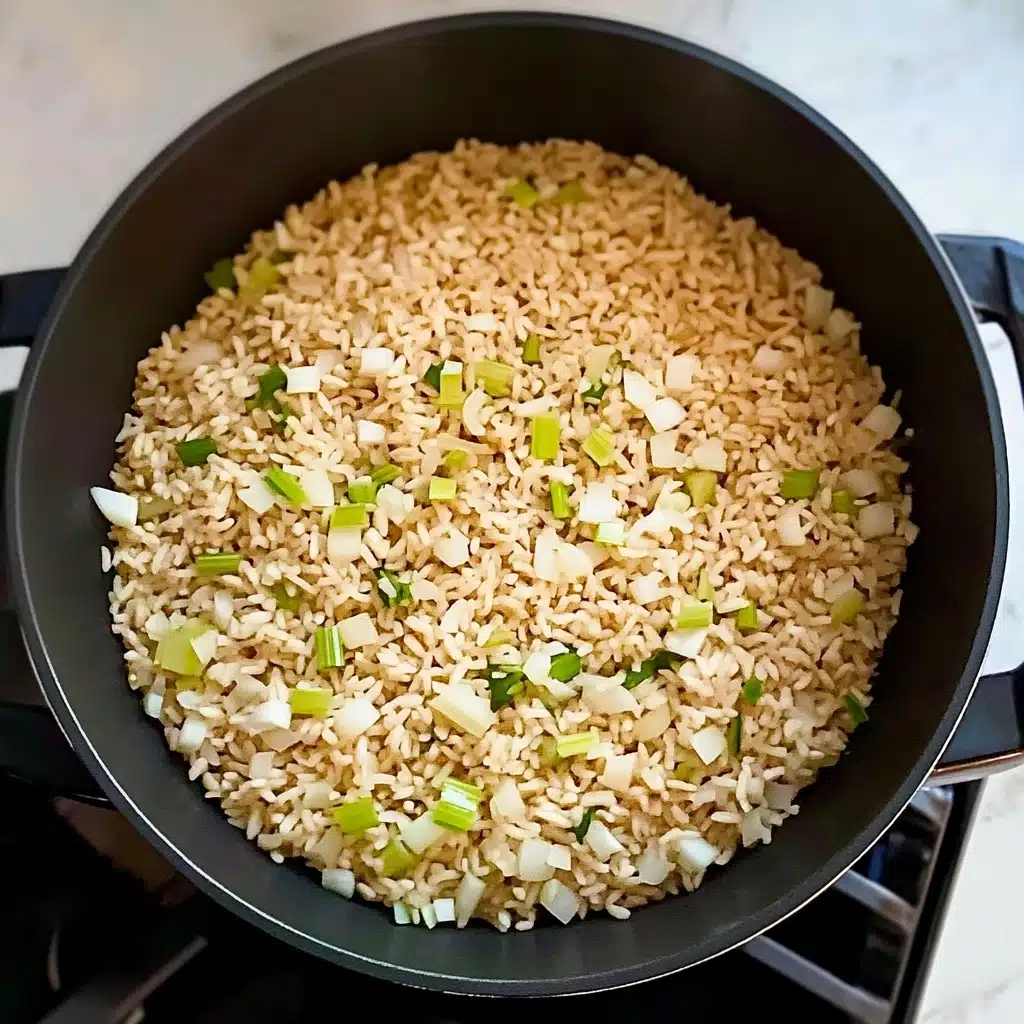
Garnishes
Sprinkle a handful of fresh parsley on top to add a vibrant splash of color and an herbal finish. Adding slivered almonds can also deliver extra crunch, adding to the dish’s textural variety.
Side Dishes
Pair your Rice Pilaf with a juicy grilled chicken or a simple roasted vegetable medley. The laid-back flavors complement each other perfectly, creating a wholesome meal.
Creative Ways to Present
Consider serving the pilaf in a large, vibrant serving bowl to make the colors pop, or use a mold to shape individual servings for a chic plated presentation. Either way, it’s a show-stopper.
Make Ahead and Storage
Storing Leftovers
Store any leftover Rice Pilaf in an airtight container in the refrigerator. It will keep for up to three days while retaining its flavor and texture.
Freezing
For extended preservation, you can freeze the Rice Pilaf. Allow it to cool completely before placing it into freezer-safe bags. It can remain in the freezer for up to a month without losing its delightful taste.
Reheating
When ready to enjoy again, gently reheat the pilaf on the stovetop or in a microwave. Add a splash of water or stock to refresh it and prevent dryness.
FAQs
-
Can I use brown rice instead of white rice?
Yes, you can substitute brown rice for white, but it will require more liquid and a longer cooking time to achieve the right texture.
-
What can I do if my rice is too dry?
If your Rice Pilaf turns out too dry, add a few tablespoons of warm stock and gently stir to moisten it without making it soggy.
-
Can I make this recipe in a rice cooker?
Absolutely! After browning the rice and sautéing the vegetables, transfer everything to the rice cooker, add the liquid, and let it do its magic.
-
Is it okay to skip browning the rice?
While you can skip the browning step, it significantly enhances the nutty flavor that characterizes a true pilaf, so it’s worth the extra effort!
Final Thoughts
Rice Pilaf is a dish that deserves a place in every kitchen. Its versatility and rich flavor profile make it ideal for both simple family dinners and festive feasts alike. Why not give it a try and explore the delightful world of pilaf at its finest?
Print
Rice Pilaf Recipe
- Prep Time: 15 mins
- Cook Time: 25 mins
- Total Time: 40 mins
- Yield: 6 to 8 servings
- Category: Side Dish
- Method: Frying
- Cuisine: American
Description
This flavorful rice pilaf is made with long-grain white rice, sautéed onions and celery, and simmered in rich chicken or vegetable stock. Finished with fresh parsley, it’s a versatile and aromatic side dish perfect for any meal, offering a delightful combination of textures and savory flavors.
Ingredients
Rice and Liquid
2 cups white rice, preferably long grainUp to 4 cups chicken or vegetable stock or broth, or a mix of water and stock
Vegetables
1/2 cup chopped green onions or yellow onion1/2 cup chopped celery
Fats and Seasonings
2 teaspoons extra virgin olive oil (or chicken fat)2 teaspoons kosher salt or seasoned salt
1/4 teaspoon freshly ground black pepper
1/8 teaspoon cayenne
Fresh Herbs
1/2 cup chopped fresh parsleyInstructions
- Heat the stock: Pour the measured amount of chicken or vegetable stock into a saucepan and bring to a simmer over medium heat. Keep it warm while you prepare the rice.
- Brown the rice: While the stock is heating, place a large skillet over medium-high heat. Add the olive oil to coat the bottom. Once hot, add the uncooked rice and cook, stirring occasionally, until the rice turns golden brown, about 2-3 minutes.
- Cook the vegetables: Add the chopped onions and celery to the skillet with the rice. Cook for an additional 3-4 minutes, until the onions begin to soften and become translucent.
- Simmer the rice: Transfer the sautéed rice and vegetables to the saucepan with hot stock. Bring to a boil, then reduce heat to low, cover, and let simmer for about 15-20 minutes, or until the rice is tender and the liquid has been absorbed.
- Finish and serve: Remove from heat, fluff the rice with a fork, and stir in chopped parsley. Season with additional salt, pepper, and cayenne if desired. Serve hot.
Notes
- For extra flavor, use homemade broth.
- Adjust the liquid amount based on your rice’s water-to-rice ratio.
- You can substitute the parsley with other fresh herbs like cilantro or thyme.
- This dish pairs well with grilled meats or roasted vegetables.
Nutrition
- Serving Size: 1 cup (about 200g)
- Calories: 240
- Sugar: 1g
- Sodium: 600mg
- Fat: 8g
- Saturated Fat: 1g
- Unsaturated Fat: 6g
- Trans Fat: 0g
- Carbohydrates: 40g
- Fiber: 2g
- Protein: 4g
- Cholesterol: 0mg

